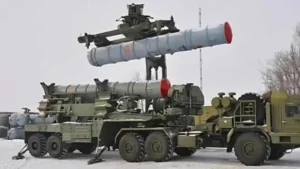At a staggering 13,700 feet above sea level and just 30 km from the Line of Actual Control, the Nyoma Airbase Activation in Ladakh by Oct 2025 marks a breakthrough in India’s border defence strategy. Designed for rapid deployment of Rafale, Su-30MKI, and advanced air defence systems, Nyoma will be the world’s highest operational fighter base—redefining how close the Indian Air Force can project power right up to the China border. Built with a brand-new 3 km runway under extreme conditions, the airfield promises unprecedented response speed, surveillance, and air superiority in a region once limited by geography and climate.
Discover how the Nyoma Airbase Activation in Ladakh by 2025 will disrupt India-China military dynamics, enhance national security, and spark new high-altitude IAF career opportunities that were once unimaginable.
Nyoma Airbase Capabilities & Transformation
The activation of the Nyoma Airbase in Ladakh by October 2025 marks a significant advancement in India’s high-altitude military infrastructure. Situated at 13,700 feet and just 30 kilometres from the Line of Actual Control (LAC), this upgraded airfield features a 2.7-kilometre-long, 46-meter-wide rigid concrete runway designed to support rapid fighter jet operations.
The transformation includes modern facilities such as air traffic control (ATC) complexes, hardened aircraft hangars, crash bays, watchtowers, and troop accommodations, all aimed at ensuring sustained and versatile operations under extreme conditions. Operationally, Nyoma is set to host frontline combat jets, including the Rafale and Su-30MKI, and will also accommodate emerging aerial technologies like drone operations. Additionally, the deployment of Akash Prime missile systems enhances the base’s air defence capabilities, making it a critical launchpad for surveillance and quick reaction force deployment along the sensitive India-China border.
Constructing this airbase at such a high altitude presented considerable challenges, including harsh winters with temperatures dropping below -35°C, thin air that reduces aircraft payload capacity, and a short construction season. Overcoming these obstacles required advanced engineering by the Border Roads Organisation (BRO) and the innovative use of materials, making Nyoma a flagship success in high-altitude military infrastructure. These upgrades ensure that India has enhanced capabilities for faster mobilisation, improved air superiority, and strong logistical support, solidifying Nyoma as a crucial asset in the ongoing territorial standoff.
Why Nyoma Airbase Shifts India-China Dynamics
The Nyoma Airbase Activation in Ladakh by October 2025 represents a significant turning point in India’s strategic positioning along the contested border with China. Located just 30 km from the Line of Actual Control (LAC), Nyoma enhances the functionality of other forward airbases, such as Daulat Beg Oldie (DBO) and Fukche, creating a robust “network effect.” This interconnected network facilitates multi-directional air operations and allows for rapid force mobilisation deep into eastern Ladakh, greatly improving India’s operational depth and responsiveness.
Nyoma Airbase Activation in Ladakh by Oct 2025 is a strategic masterstroke, enhancing India’s air dominance along the China border.
NDA Study Analysis
In comparison to the People’s Liberation Army (PLA) bases, like Ngari Gunsa, Nyoma features a modernised 2.7 km runway and infrastructure capable of supporting heavyweight fighter jets such as the Rafale and Su-30MKI, along with advanced Akash Prime missile systems. While the PLA’s high-altitude airfields face restrictions regarding payload and sortie rates, India’s engineering advancements at Nyoma effectively overcome these limitations, enabling enhanced air dominance.
Experts from think tanks like the Institute for Defence Studies and Analyses (IDSA) and the Observer Research Foundation (ORF) assert that Nyoma is more than just an airstrip; it is a strategic pivot that shifts the military balance at the LAC. Its activation signifies India’s commitment to credible deterrence and the ability to execute faster, coordinated military responses in a region characterised by long-standing tensions. Consequently, the activation of the Nyoma Airbase in Ladakh emerges as a key game-changer for Indo-China border security.
Official Voices & Inside Perspective
The Indian Air Force and Ministry of Defence have lauded the Nyoma Airbase Activation in Ladakh by Oct 2025 as a “significant stride in strengthening India’s defence posture along the China border.” An Indian Air Force (IAF) spokesperson made a statement to the NDA Study, “Nyoma enhances our rapid response capabilities at extreme altitudes, making it a vital strategic asset in the region.”
Wing Commander Ramesh Singh, a veteran pilot familiar with high-altitude operations, shared, “Operating from Nyoma is a game-changer — the upgraded runway and facilities allow us to deploy fighters like Rafale and Su-30MKI swiftly, even in challenging conditions.”
Also Read:
India’s ₹29558 Crore Defence Tech Budget: The Gamechanger You Can’t Miss
India’s Indigenous Pollution Control Vessel Samudra Prachet Launched by GSL [2025 Exclusive ]
How Kerala’s British F-35B Jet Became a Meme Sensation—And Flew Home After a Month
Pakistan Closes Entire Airspace Amid Missile Test or Military Drill? – Exclusive Expose
Is Pakistan Preparing for Conflict? NOTAM Raises Red Flags in Central Air Command
An engineer involved in the construction added, “Building in such harsh terrain tested our limits, but the advanced infrastructure now sets new standards for military bases worldwide.”
These authoritative voices highlight Nyoma’s strategic significance and operational excellence, underscoring India’s commitment to frontier security and inspiring the next generation of defence personnel.
The Youth & Technology Angle – High-Altitude Careers
The activation of Nyoma Airbase in Ladakh by October 2025 is creating exciting career opportunities in several high-tech and demanding fields. Young aspirants can aim for roles such as piloting frontline fighters like the Rafale and Su-30MKI, operating advanced UAVs for surveillance, managing Air Traffic Control (ATC), planning logistics, and focusing on high-altitude engineering. Each of these careers requires specialised skills and training tailored to extreme cold, low oxygen levels, and challenging terrain, highlighting the importance of both physical endurance and technical knowledge.
Training for these positions involves rigorous preparation that includes aviation theory, UAV piloting, radar operations, high-altitude survival, and logistics management. For candidates aspiring to join the NDA (National Defence Academy) and IAF (Indian Air Force), excelling in these areas is essential, linking the operational advantages of Nyoma Airbase with the shifting focus of defence exams and recruitment. To qualify, candidates typically need proficiency in physics and mathematics, along with strong physical fitness and mental resilience, which are crucial for high-altitude assignments. Career pathways include direct fighter pilot commissions, technical roles for UAV operators and engineers, and positions as logistics officers, each offering a vital role in securing India’s highest borders.
Geopolitical Implications & Analysis
The Nyoma Airbase Activation in Ladakh by Oct 2025 strengthens India’s “active deterrence” strategy by improving rapid military deployment and surveillance in one of the most sensitive and contested regions. Located just 30 km from the Line of Actual Control (LAC), the Nyoma Airbase enhances India’s ability to project power in the region, demonstrating a commitment to defending its territorial integrity with advanced air capabilities. This airbase will enable India to conduct precision air operations quickly, reinforcing its position amidst ongoing tensions with China.
PLA Reacts & Future Implications
Chinese military analysts consider Nyoma to be a significant enhancement to India’s high-altitude defence network, especially due to its proximity to PLA bases like Ngari Gunsa. Experts from Indian think tanks, such as the Institute for Defence Studies and Analyses (IDSA), observe that Nyoma’s upgraded runway and air defence systems shift the tactical balance in favour of India. This enhancement allows the Indian Air Force to carry out quicker sorties and engage in complex multi-directional operations, which may complicate the strategic calculations of the PLA.
By integrating Nyoma with other bases like Daulat Beg Oldie (DBO) and Fukche, India establishes a layered defence posture that reduces response times and improves logistical support. According to experts from the Observer Research Foundation (ORF), the operationalisation of Nyoma may lead to a reassessment of military deployments by both countries, heightening border security dynamics and bolstering India’s long-term regional influence in the Himalayas.
FAQs on Nyoma Airbase Activation in Ladakh by Oct 2025
1. What is the Nyoma Airbase Activation in Ladakh?
Nyoma Airbase Activation in Ladakh refers to the upgrade and operationalisation of India’s highest fighter-capable airbase at 13,700 feet, set for full readiness by October 2025. It enhances India’s rapid military response near the Line of Actual Control (LAC) with China.
2. Why is Nyoma Airbase important for India-China border security?
Nyoma Airbase, located just 30 km from the LAC, strengthens India’s high-altitude defence network by enabling quicker fighter jet deployment and surveillance, thereby shifting the power balance near the disputed border region.
3. Which aircraft and systems will operate from Nyoma Airbase?
The upgraded Nyoma Airbase will host frontline fighter jets like Rafale and Su-30MKI, advanced drones, and air defence systems including Akash Prime missiles, enhancing air superiority and rapid response capabilities.
4. What challenges were faced in constructing Nyoma Airbase at such a high altitude?
Building Nyoma at 13,700 feet involved overcoming extreme cold, low oxygen levels, short working seasons, and difficult terrain. Innovative engineering and materials enabled the creation of a durable 2.7 km runway and modern infrastructure.
5. What career opportunities does Nyoma Airbase offer to Indian youth?
Nyoma’s activation opens roles in flying, UAV operation, air traffic control, logistics, and high-altitude engineering—requiring specialised training. It aligns with NDA and IAF recruitment priorities, inspiring new defence career paths.
Infrastructure & What’s Next: The Future of Nyoma
The activation of the Nyoma Airbase in Ladakh, scheduled for October 2025, marks the beginning of a broader strategic vision. Planned upgrades include the integration of indigenous drones for advanced surveillance and reconnaissance, the deployment of next-generation fighters such as the Tejas Mk2, and the implementation of cutting-edge, AI-driven airspace monitoring systems. These enhancements will significantly increase Nyoma’s operational capabilities in extremely high-altitude conditions.
In addition to military applications, Nyoma is set to support civilian and emergency operations, such as rapid medical evacuations and disaster response. This establishes a precedent for dual-use functionality in the Himalayas. As a model for future Himalayan airbases, Nyoma’s design and infrastructure reflect resilience, technological sophistication, and flexibility for multiple missions—paving the way for India’s expanding defence presence in high-altitude regions.
Author’s Word
Nyoma Airbase is not just a runway; it represents India’s strong message of strategic strength and technological excellence at an elevation of 14,000 feet. Its activation enhances border defence and creates exciting new career opportunities in high-altitude air operations. Follow NDA Study for the latest updates, expert analysis, and exclusive guidance on careers related to India’s groundbreaking Nyoma Airbase. Stay informed and become part of the future at India’s northernmost defence frontier.
Stay Tuned & Stay Connected!












